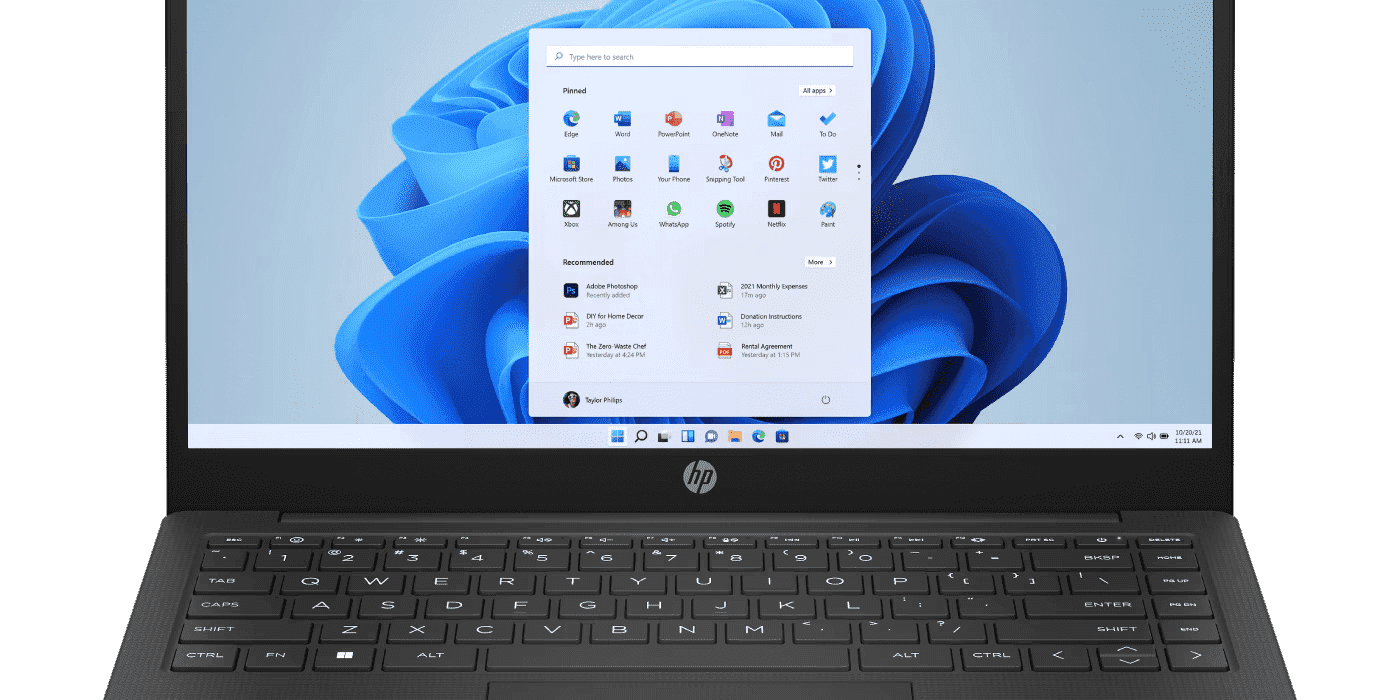Thank you for visiting the NEW ZEALAND HP Store
-
Contact Us
CONTACT USCall us
- Sales
- 0800 854 848
- Technical support
- +64 9884 8600
Mon-Fri 9.00am - 6.00pm
(exc. Public Holidays)
Chat with us- Our specialist are here to help
- Live chat
Mon-Fri 9.00am - 6.00pm
(exc. Public Holidays)
Submit feedback We value your opinion! - My Account
Search
3 Best HP Scientific Calculators for 2023

Posted:
November 24, 2023
Categories:
Accessories

The HP 35S scientific calculator is the gold standard for engineers, scientists, surveyors, college students, and medical professionals. But what’s the best scientific calculator for your specific situation? It’s a tricky question because except in certain niches, tablets and computers have cut the need for scientific and graphing calculators to nearly zero. However, in those niches, these calculators are indispensable.
The best 3 HP scientific calculators are:
- The HP 35S scientific calculator - best for pros & college students
- The HP 300S+ scientific calculator - best for college & high school students
- The HP 10S scientific calculator - best for high school classroom inventories
Many high school and college classes don’t allow you to use laptops, phones, and tablets, especially during finals and other tests. Students who hope to do well in those classes need to know how to use scientific calculators and graphing calculators in advance of test time. Even after college, professionals like engineers, surveyors, and healthcare pros rely on these robust machines daily for their versatility and ease of use.
The best HP scientific calc for students or engineers is different from the top choice for high school teachers looking to equip their classrooms. Read on to see details about the top 3 scientific calculators from HP.
Contents
What makes a calculator scientific?
A scientific calculator is an electronic calculator specially designed to tackle solutions in the fields of engineering, surveying, advanced mathematics, medicine, and science. They’re widely used by professionals and students. Unlike normal calculators, they come preloaded with equations and tables necessary for advanced mathematics.
HP scientific calculators are popular test-taking tools in high-school, college prep, and college classes. They’re distinct from financial calculators or business calculators, which are geared specifically to business applications. Professionals who work in harsh environments like machine shops or refineries rely on them for daily use. Many scientific calculators are also graphing calculators that can display graphs of equations on their screens.
Uses for a scientific calculator
The uses for scientific calculators include algebra, trigonometry, calculus, and other types of mathematics in high school, college, and numerous technical professions. These calculators are handy in situations where other devices aren’t allowed or would be at risk of being lost or damaged.
EXPONENTS AND BASIC FUNCTIONS
An HP scientific calculator can handle exponents like squares, cubes, and other powers and roots. It can also process complex equations with multiple variables and a specific order of operations. In these instances, basic calculators run into trouble by not “knowing” which steps go first in an equation. That can be disastrous in financial analysis, toxicology, architectural design, and hundreds of other professions.
LOGARITHMS
Students and professionals who work with trigonometry and calculus have to process logarithms. These formulas help us figure area, speed, interest rates, and other complex real-world solutions. People in the medical, engineering, and other technical fields use logarithms daily.
TRIGONOMETRY
Sines, cosines, and tangents are unavoidable in trigonometry and calculus. Sines, inverse sines, and cosines are vital for measuring or finding angles. Tangents are a staple of construction, mechanics, topography, and space exploration. In fact, if you saw the movie Hidden Figures, you saw Katherine Johnson figure tangents. It’s possible to find these values with a pen and paper, like she did back in the 1950s, but that’s a slow slog compared to the instantaneous results a scientific calculator can give.
SCIENTIFIC NOTATION
Millions, billions, and trillions are nice, but it’s tough to think in terms of vigintillions (that’s a number with 63 zeros). Thankfully for engineers and other technical professionals and students, HP scientific calculators handle massive values in stride. They do it by using scientific notation as shorthand. That way, scientific calcs can include these large numbers in future calculations while saving lots of time and effort.
BINARY FUNCTIONS
Functions with two variables are called binary functions. They’re important in Cartesian math, used frequently by managers, IT pros, engineers, and budget analysts to name a few. It’s difficult to solve these functions without a calculator that has multiple memory registers. Scientific calculators can carry the results of these functions forward for use in later calculations.
What to look for in a scientific calculator
There are a few different reasons to buy a scientific calculator, which means different people will need different specs. When buying an HP scientific calculator, consider whether you’re a technical professional, student, or a high school teacher, then check out the following details:
- Cost: Working pros care less about cost and more about getting the job done. By contrast, a student or teacher buying for a classroom may want more affordable options and solar power to save on battery expense
- Applications: Are you an engineer? Surveyor? Medical professional? Math student? All scientific calculators aren’t created equal. Check which functions are included in a calculator before buying
- Display: The more vertical lines on the display, the easier it is to fit equations and solutions on it. A single-line display won’t let you view complex equations at a glance, so opt for a 2-line or 4-line display
- Power-off memory protection: What happens when your calculator shuts off because you didn’t use it for 5 minutes? Look for calculators with memory protection if you want your work to stay intact while you’re not using it
3 best HP scientific calculators
The 3 best HP scientific calculators each have a specific niche. There’s a different best choice for professionals, high school or college students, and teachers stocking up their classrooms. Each comes pre-loaded with over 100 functions for advanced math, statistics, trigonometry, and other uses. All have multi-line displays for easy viewing of equations and solutions. Each one also carries a 1-year limited warranty.
1. HP 35S SCIENTIFIC CALCULATOR

For professional engineers, surveyors, medical professionals, scientists, and technical pros, the HP 35S scientific calculator is the machine of choice. This calc is also a great pick for high school or college students with bigger budgets.
Versatile and powerful, the HP 35S has more than 100 built-in functions. It can easily perform linear regressions, one or two-variable statistics, and a long list of other computations. It’s also loaded to the hilt with a full library of unit conversions, exponents, logarithms, inverse functions, factorials, cube roots, and more.
The HP 35S is durable and comes with a 2-line LCD display and 14 characters per line. Its adjustable contrast feature lets you work with ease indoors or outside in full daylight. Its included CR2032 batteries last about 9 months with 1 hour per day of normal use. Should your unit fail in the first year, the limited warranty will replace it for free.
Professionals often work on more than one problem at a time. This HP scientific calculator is geared for that, with 800 memory registers and a full 30K of user memory. Students will be glad to know it’s allowed in the SAT Reasoning, SAT Math Level 1 and 2, ACT, and several other standardized tests. Its memory protection ensures you won’t lose what you’re working on because of power-offs. It’s also the only scientific calculator that lets you choose between RPN (reverse-Polish notation) and algebraic entry-system logic.
“I use scientific calculators in the shop daily - mostly because they’re robust enough to survive in my harsh working environment.” - Brian Yates; welder, metalworker, and CEO of Liquid Metal Fab
Additional specs:
- Permitted in many SAT and ACT test sections
- Auto power-off after 10 min
- Dimensions: 3.23 x 0.72 x 6.22 inches
- 4.4 oz
- No solar backup
2. HP 300S+ SCIENTIFIC CALCULATOR

High school and college students on a budget need a calculator they can trust. The HP 300S+ scientific calculator is the perfect choice for cash-strapped students who won’t use a calculator for much outside of class and tests.
This calculator is a great pick for math, trigonometry, statistics, and science applications. It’s a low-cost option that still manages to pack in a ton of features. For example, its 4-line, 15-character LCD display lets you take in the entire picture at a glance.
This HP scientific calculator has 315 built-in functions for general math, statistics, algebra, trigonometry, and more. Its 9 memory registers leave plenty of room to track multiple calculations, and the handy memory protection means you won’t lose your answers even when you power down.
The HP 300S+ scientific calculator’s dual solar and battery power means you’re never left without solutions at test time. Its durable housing and slim, compact profile fit easily in a backpack or messenger bag.
“I used my scientific calculator incessantly for formulas in economics classes, normal distributions, statistical analyses, and working out integrals in calculus. Any time you see Pi, e, or lambda in math, a scientific calculator can help.” - Dan Reiter, software engineer
Additional specs:
- Permitted in many SAT and PSAT test sections, AP Chemistry/Physics
- Auto power-off after 5 min
- Dimensions: 3.04 x 0.59 x 5.79 inches
- 3.95 oz
3. HP 10S+ SCIENTIFIC CALCULATOR

High school teachers who need a low-cost option for their classrooms can get a lot of mileage from the HP 10S+ scientific calculator. This durable pick is the smart choice when your students have to be on the same page for general math, statistics, algebra, and trigonometry.
The HP 10S+ has a user-friendly design that students can quickly master. The solar power and long-lasting battery backup keep it working for years even in low light. It auto powers off after 5 minutes of disuse to save its easy-to-read 2-line display from wear and tear.
With 240 built-in functions, students will tackle ample calculations for permutations, random numbers, regression analyses, or other statistical tasks. This HP scientific calculator can also do decimal and hexadecimal conversions as well as rectangular and polar conversions.
You’ll handle advanced statistics easily as well, including standard deviations, means, variances, and other factors with editable lists. Unlike the HP 35S scientific calculator, the 10S has only 9 memory registers and no power-off memory protection, so you’ll want to preserve solutions as soon as they’re delivered.
“For my classroom, I like inexpensive, solar-powered scientific calculators. We buy them in bulk so we can make sure there’s consistency in instruction, with every student using the same calculator. That’s especially important when it comes to order-of-operations, keyboard layout, and an easy-to-read display.” - Radley Miller; high school science teacher
Additional specs:
- Handy 4-direction cursor buttons
- Dimensions: 3.04 x 0.59 x 5.79 inches
- 3.25 oz
In summary
Scientific calculators are the lifeblood of students for high school, college, and standardized tests. They’re also trusty tools for seasoned pros like engineers, surveyors, and medical professionals. When you’re shopping for the best HP scientific calculators, consider what you’ll use yours for and whether you’ll rely on it for trig, algebra, statistics, or other functions. Also consider your budget, whether solar power backups are important, and how many memory registers and built-in functions you’ll need.
0 Comment(s)
Products purchased through this store are sold and fulfilled by Ingram Micro (NZ) LTD
CONTACT US
Call us
- Sales
- 0800 854 848
- Technical support
- +64 9884 8600
Mon-Fri 9.00am - 6.00pm
(exc. Public Holidays)
Chat with us
- Our specialist are here to help
- Live chat
Mon-Fri 9.00am - 6.00pm
(exc. Public Holidays)
Submit feedback
We value your opinion!








